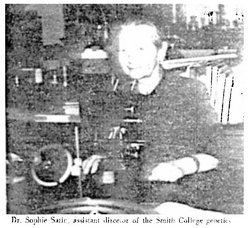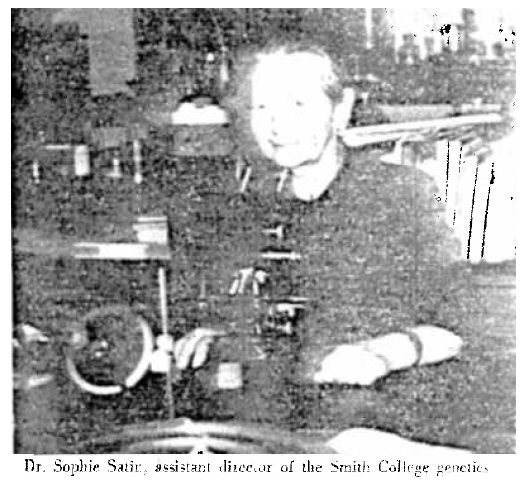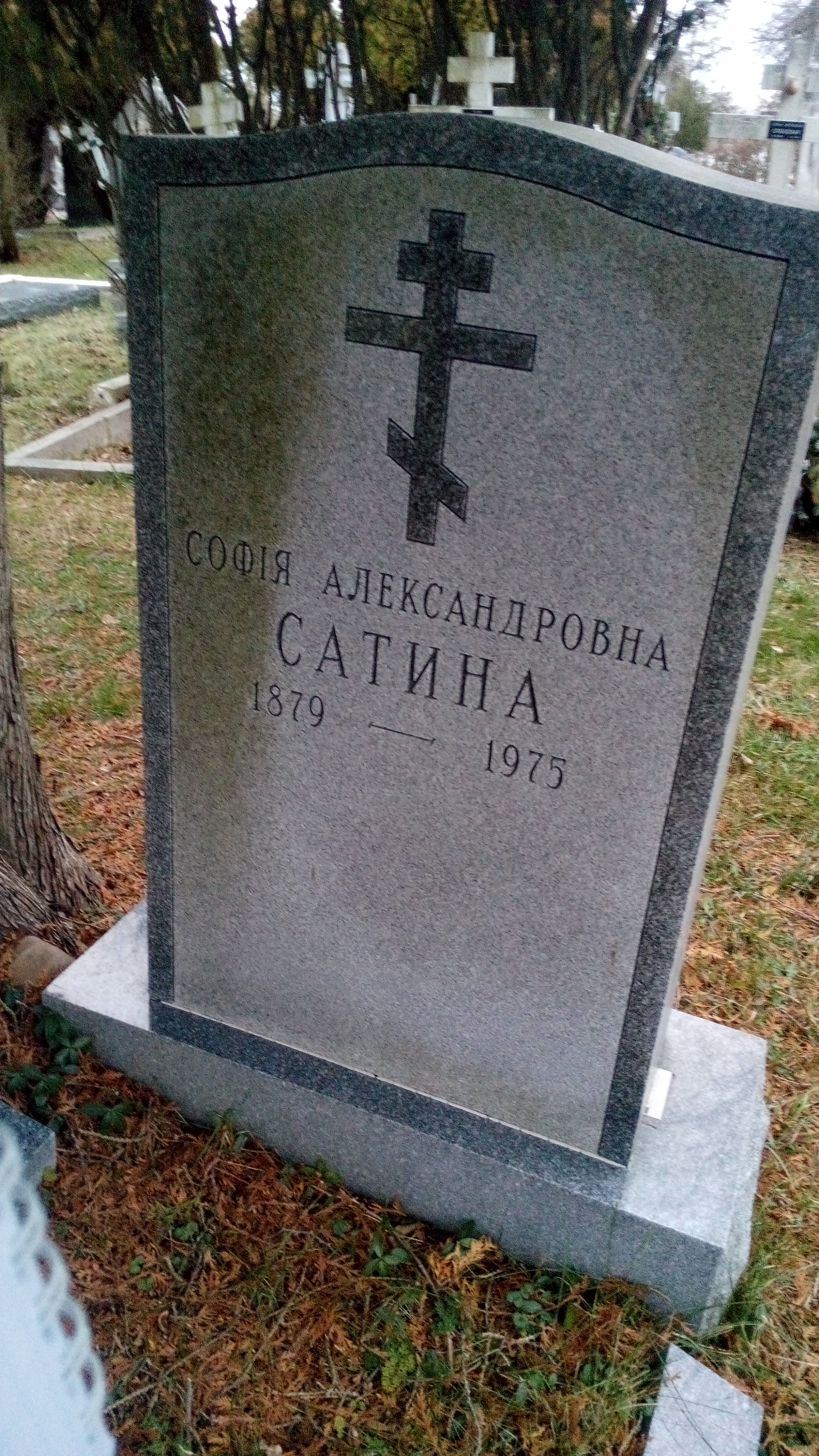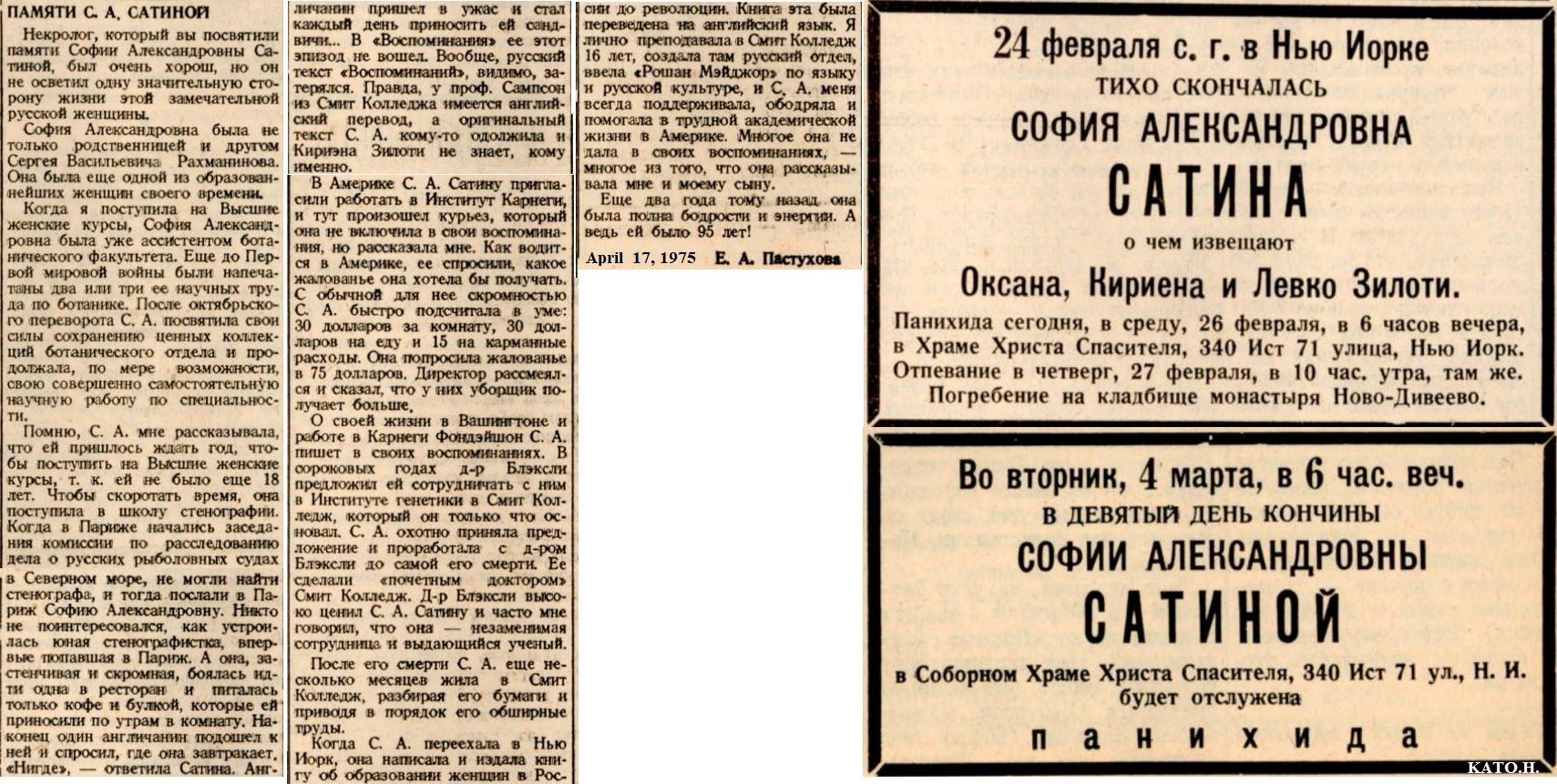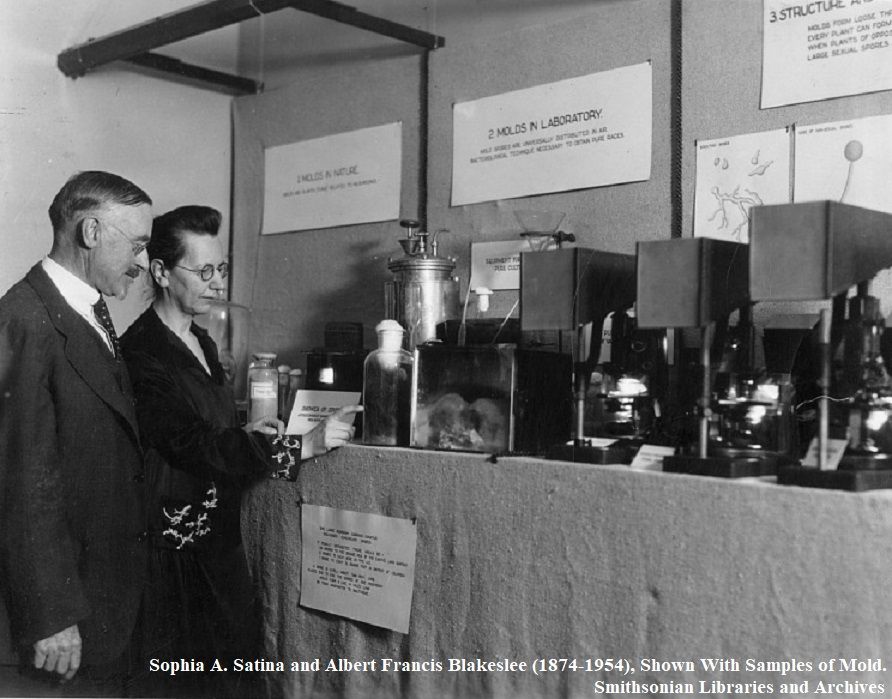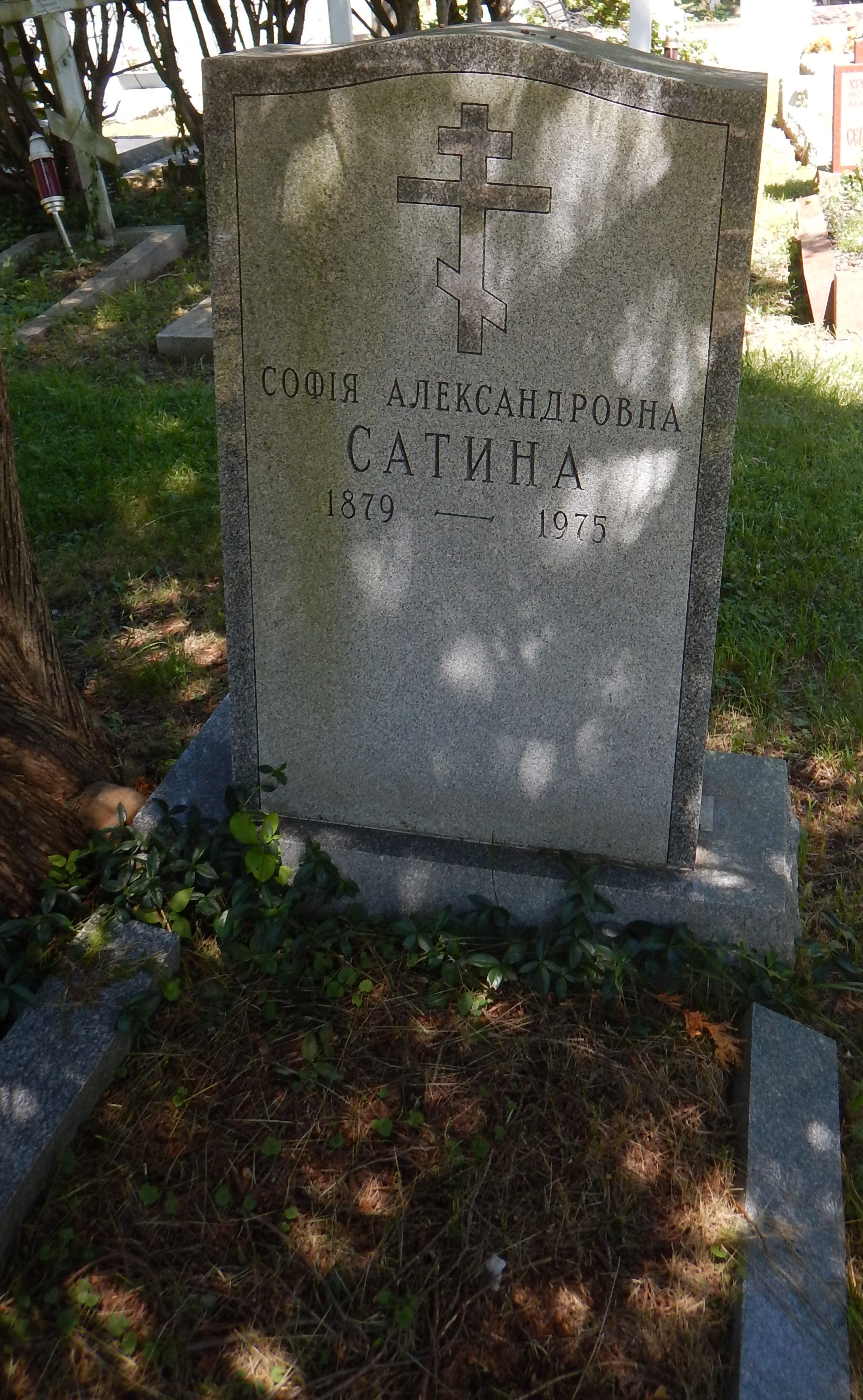Born in Ivanovka, Tambov Gub., Russia
She was actively involved with Medicine, Biology and Genetics.
Satina, an ardent advocate for women's education during the Tsarist regime, was a graduate of the first class to matriculate at the Women's University in Moscow. She continued to be involved with the University, becoming an assistant professor in the Department of Botany, a position she held until her departure from Russia in 1921. Prior to her emigration, Satin and a few of her colleagues opened a botanical museum in Moscow that was free to the public. The museum was active until the Bolsheviks staged a revolution in 1917. Satin, an activist and feminist, fled to the United States in response to the new regime and began researching at the Carnegie Research Laboratories in Cold Springs Harbor, New York. In 1943, Satin acquired a position at Smith College working under famed Geneticist Albert Blakeslee as a research assistant in the Genetics Experimental Station (G.E.S.). While Satin did not hold a Ph.D., she became a visiting associate professor of Botany, and assistant director of the G.E.S. She worked at the college until her retirement in 1955. Through her work, Satin helped lay the foundations for growing the fungus penicillium, and in 1944 was awarded an Honorary Doctorate in Science from Smith College.
Sophia's sister Natalia was married to Sergei Vasilievich Rachmaninoff the composer, ie Sophia was Rachmaninoff's sister-in-law.
video interview, Rachmaninoff's niece, interview from 1993;
articles:
Born in Ivanovka, Tambov Gub., Russia
She was actively involved with Medicine, Biology and Genetics.
Satina, an ardent advocate for women's education during the Tsarist regime, was a graduate of the first class to matriculate at the Women's University in Moscow. She continued to be involved with the University, becoming an assistant professor in the Department of Botany, a position she held until her departure from Russia in 1921. Prior to her emigration, Satin and a few of her colleagues opened a botanical museum in Moscow that was free to the public. The museum was active until the Bolsheviks staged a revolution in 1917. Satin, an activist and feminist, fled to the United States in response to the new regime and began researching at the Carnegie Research Laboratories in Cold Springs Harbor, New York. In 1943, Satin acquired a position at Smith College working under famed Geneticist Albert Blakeslee as a research assistant in the Genetics Experimental Station (G.E.S.). While Satin did not hold a Ph.D., she became a visiting associate professor of Botany, and assistant director of the G.E.S. She worked at the college until her retirement in 1955. Through her work, Satin helped lay the foundations for growing the fungus penicillium, and in 1944 was awarded an Honorary Doctorate in Science from Smith College.
Sophia's sister Natalia was married to Sergei Vasilievich Rachmaninoff the composer, ie Sophia was Rachmaninoff's sister-in-law.
video interview, Rachmaninoff's niece, interview from 1993;
articles:
Family Members
Sponsored by Ancestry
Advertisement
Explore more
Sponsored by Ancestry
Advertisement
